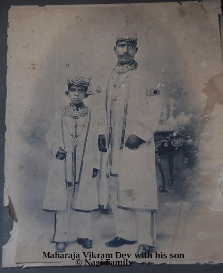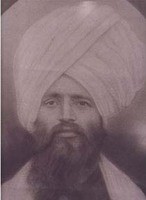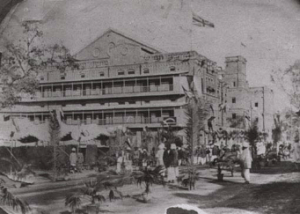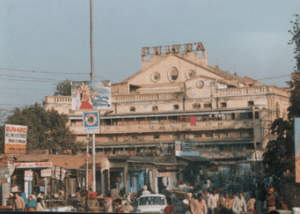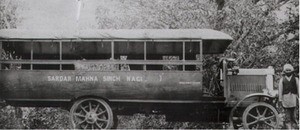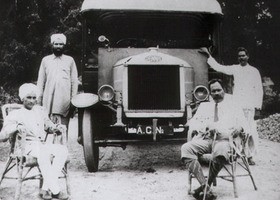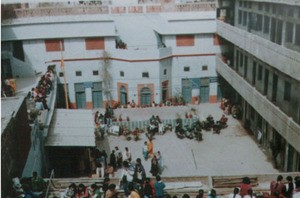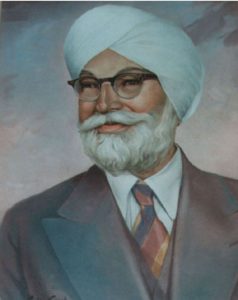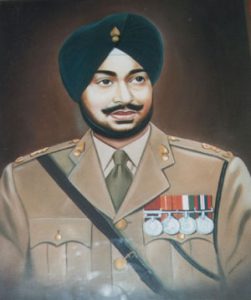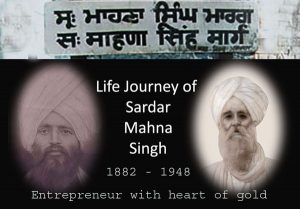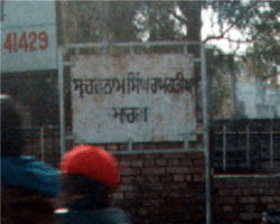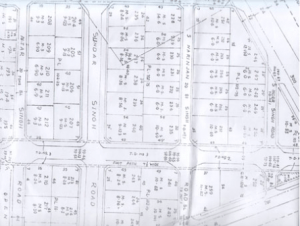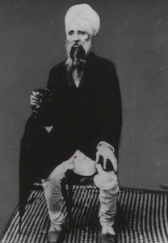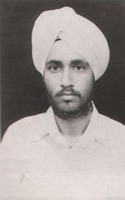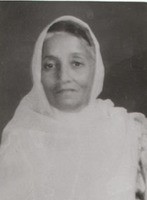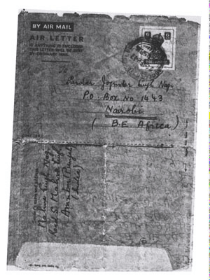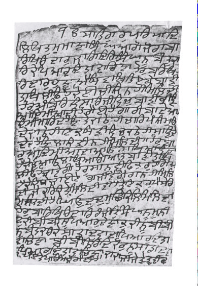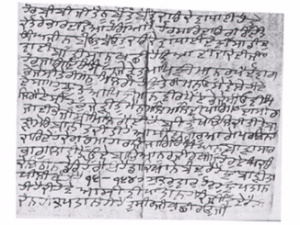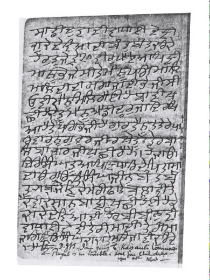The Forgotten Gurdwara of Jeypore, Odisha
About the Author
The author of this article “The Forgotten Gurdwara of Jeypore, Odisha” is Anil Dhir
who’s an independent researcher based in Odisha, India He has done his Master’s in
English, History and Public Administration He’s a punjabi born and brought up in
Jeypore Anil is in the process of writing a book on the city of Jeypore, there will be a
chapter allocated to Mahna Singh.
While carrying out research for the book, he came across Nagi’s website that’s he
came to know me. He believes that Mahna Singh deserves an recognition for his
contribution to the city of Jeypore. I’m hoping to be visiting Jeypore at the launch of
the book 2017 and to thank Anil personally for dedicating a chapter to Gramp in his
book .
British named the state Orrisa but recently Indian Government has changed it to the
post British Raj name “Odhisa”.
The photos of Maharaja Vikram Dev in this article are from Nagi’s familly Photos
Archive”.
The Article About the lost Gurdwara of Jeypore, Odisha
Written by Anil Dhir
I found it in a small street, set off from the main road which has the Palace and the market.
The small one-roomed gurdwara was built like a small forest lodge with a verandah all around. Two huge trees at the entrance of the small room dwarfs the little structure.
This was the first gurdwara set up by any Sikh in Orissa, now Odisha, in India.
Built in 1883, on the land given by the erstwhile Maharaja of Jeypore, the little gurdwara had originally been a thatched hut for more than 50 years. The Guru Granth Sahib was placed in the small shrine sometime in December 1883 in a grand ceremony that was attended by more than 300 devout Sikhs.
Sardar Mahna Singh Nagi was born in 1864 in a village called Lola near Amritsar. He belonged to a community of Punjabi artisans — popularly known as ramgharias — which then, being of low income, had no right to vote. They were skilled workers expert at carpentry and building work.
Mahna Singh’s parents had died when he was just 12 years old. He could get very little education but he mastered the Punjabi language well. He was well versed in the Sikh martial arts and was an expert Gatka and sword fighter.
Due to penury he was forced to leave his ancestral village at a young age to earn his livelihood with his brothers. He worked with them as an apprentice carpenter. At the age of 18, he joined the army as a carpenter and saw action in the Second Afghan war in 1882.
After his discharge, he came back from the front and started taking small building contracts in Amritsar. He married in a village called Marhri, near Batala, District Gurdaspur and was blessed with two children. A few years later his wife
died leaving him to take care of the little children.
Having become an experienced building contractor, he left Amritsar in search of greener pastures. He arrived at Nagpur and was given the contract to build a jail. After successfully completing this contract he built up some capital and looked
out for more entrepreneurial opportunities.
From Nagpur he went to Vishakhapatnam, the port on the east coast of the subcontinent. It was 1891 and he was 27 years old.
Here he met the emissaries of Bikram Dev, the Maharaja of Jeypore. The Maharaja had shifted his Capital and was in search of a contractor to build his new palace.
Mahna Singh, along with his nephew Vidawa Singh, left for Jeypore which was a good 150 miles from Vishakhapatnam.
The journey to Jeypore was long and rough, through hilly and wild forest terrain. They travelled by bullock carts and it took four days to reach Jeypore.
The Maharaja was impressed by the credentials of Mahna Singh and gave him the contract to make the palace. After signing the agreement with the Maharaja, he went back to Punjab and brought back 200 skilled workers, including carpenters and masons.
It took Mahna Singh 10 years to complete the palace. The Maharaja was overjoyed and rewarded him with riches and out of sheer respect for his honesty and integrity, accorded him a special honorary title.
With so many Sikhs present in Jeypore, Mahna Singh requested the Maharaja to give him a piece of land for constructing a gurdwara. The Maharaja readily agreed and sometime in late 1893 the Gurdwara of Jeypore was consecrated with the Guru Granth Sahib.
On the day of the consecration, the Maharaja himself visited the gurdwara in a State procession and presented Mahna Singh with a double edged sword, which is still there.
This was the first gurdwara set up by any Sikh in Odisha.
Mahna Singh and his clan prospered and the small Sikh community soon grew. Others came and he helped them set up small businesses. The Maharaja would entrust most of his important works to Mahna Singh and took him on as an adviser.
Sardar Mahna Singh, though well known for his riches, was also famous for his generosity. He helped in the marriage of 200 girls from poor families. He allowed mendicants to travel free of charge on his buses and provided food for them on their journey. He gave away charity and donations worth thousands of rupees every year to poor and the pious.
The new gurdwara was the only one within miles. People flocked from afar to take part in the paatth, langar and gurpurabs.
The Maharaja too gave his benevolence and the citizens of other communities too would come for the langars. Over time the old thatched hut was transformed into a tiled roof and later on a tin roof was added.
Mahna Singh prospered and opened up a new business venture in Amritsar, however he did not sever his connections with Jeypore. After the death of the Maharaja, the new ruler was not well disposed toward him and he cancelled a lot
of leases and contracts that his predecessor had given.
Mahna Singh suffered huge losses and was practically reduced to a pauper.
He still preferred to remain in Jeypore. The gurdwara that he had set up saw many upheavals, but it maintained a continuous tradition of recitation of gurbani.
The post-independence years and the abolition of the princely kingdoms saw many of the Sikhs leave Jeypore, but there was an influx of new people who had come after the Partition of Punjab.
The new breed of Sikhs was not well inclined towards the existing Sikh gentry as the latter were mostly artisans by trade. The newcomers were uncomfortable in intermingling.
Mahna Singh died in Jeypore in 1948. Most of his relatives and the people he had got from Punjab left Jeypore. In the late 1950’s, the new arrivals built another gurdwara. They stopped going to the old one and it fell into neglect.
The few artisan families that were left behind managed to keep the Nishan Sahib flying. Now only half a dozen Sikh families would visit the old gurdwara.
However a few locals would always come and worship there.
In the langars that were held, the parshaad too changed form. Local cuisine was now being served in the langar.
Today, the old gurdwara still stands as a living testimony of a noble and kind man who spread the teachings of the Gurus not only in words but in deeds. It is maintained frugally, yet the neatness stands out. The woodwork and furnishings such as the manji and palki too are sparse, simple and spartan.
Strange, as examples of the excellent woodwork done by the Sikhs are still visible in many places in Jeypore. There are two small rooms at the entrance, where the granthi lives with his family. As the donations from the gurdwara are not sufficient, the granthi does the seva in the morning and then departs for other work.
The gurdwara has century-old artifacts which were presented by the Maharaja and Mahna Singh. The khanda that had been presented by the Maharaja is proudly displayed in front of the palki. There are calendar images which are more than seventy years old. Even the biradh saroops of Guru Granth Sahibs are carefully wrapped and kept in the ‘sach khand‘. I counted at least five of the old saroops.
The original Guru Granth Sahib that was brought by Mahna Singh in 1891 too is still there. Nobody has done the ‘Agan Bhent’ seva to date.
This gurdwara has been forgotten. Even the official directory of the Gurdwaras of Odisha published by the Orissa Sikh Pratinidhi Board does not list it.
It is tragic, as this is the first gurdwara of the State.
I had met the members of the other big gurdwara of Jeypore. When I told them of the historicity of this old gurdwara they just shrugged it away.
Incidentally, the new gurdwara is called the ‘Wadda Gurdwara’ (literally, the big gurdwara). The old one has been relegated by history as the ‘Chhotta Gurdwara’ (the small gurdwara).
[The author is an independent researcher based in Odisha, India. He has done his Master’s in English, History and Public Administration. His interests include flying, film making, collecting old books and manuscripts, Indian temple art and architecture, green issues, and traveling second class by Indian Railways. He has directed and produced an award winning film titled “The Last Post”. He has written three books and is now completing a book on the Sikhs of Odisha.]
August 16, 2014
The Forgotten Gurdwara Of Jeypore
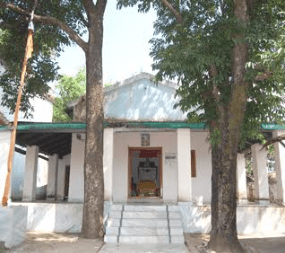
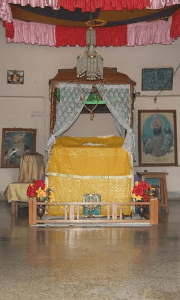

Maharaja Vikram Dev of Jeypore (1889 – 1969)
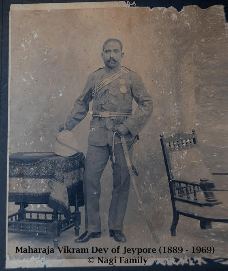
Maharaja Vikram Dev of Jeypore with his Son